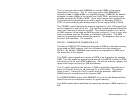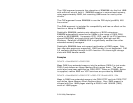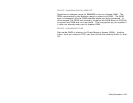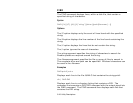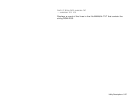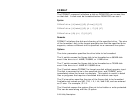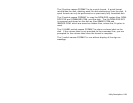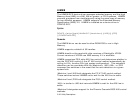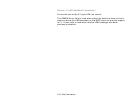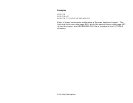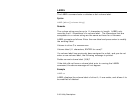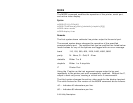Utility Descriptions 5-31
Alternately, /CONTROLA20:OFF instructs HIMEM to
not
detect the control
method for the A20 line and assumes the A20 line is always on.
The /BIOS switch forces the use of BIOS Int15h, Function 87h, for data
transfers to and from XMS memory.
The /QUIET switch forces HIMEM to remove the sign-on message when
loading.
Error Conditions
No Extended Memory—An extended memory error condition can occur if
the BIOS (via Int 15H, function 88H) notifies HIMEM that there is no
extended memory. In this situation, HIMEM displays an appropriate error
message and does not install.
Failure to Control the A20 Line—When HIMEM installs, it attempts to
control the A20 line, which controls access to the HMA. HIMEM first
attempts control via the AT method (using the 8259 keyboard control). If
that fails, HIMEM then attempts control via the PS/2 method (using I/O
port 60H). If both methods fail, HIMEM assumes it can’t control the A20
line and displays the message
A20 Control (OFF)
If either of these errors occur, try using the /A20, /A20+, or /PS2 in the
HIMEM command line.
Note also that some older programs assume that the machine is a 1MB
8086 and so require that the A20 line to be disabled (OFF) while they run.
Current programs typically do not require that the A20 line be disabled.
Examples
Device = C:\DOS\HIMEM.SYS
Installs the XMS device driver. Once this driver is installed, accessing
the HMA and Extended Memory (XMS) memory areas are legal. The
Extended Memory area can contain up to 2GB of memory. Typical
systems have 4, 8, or 16MB of XMS memory installed.



